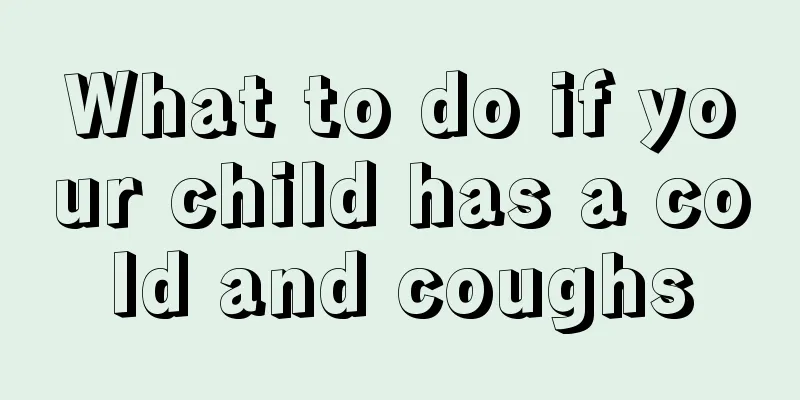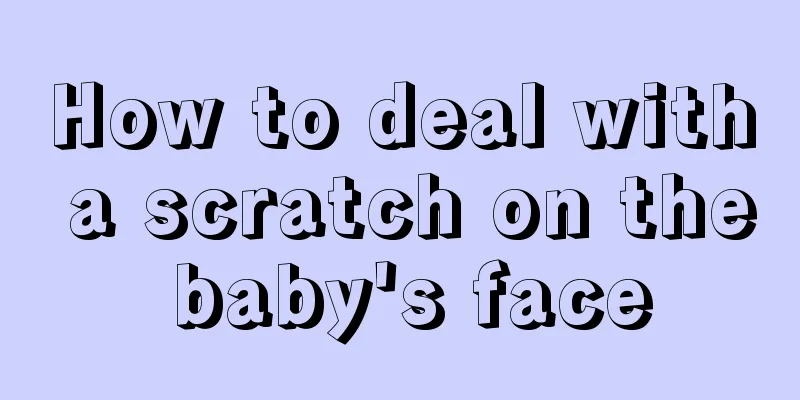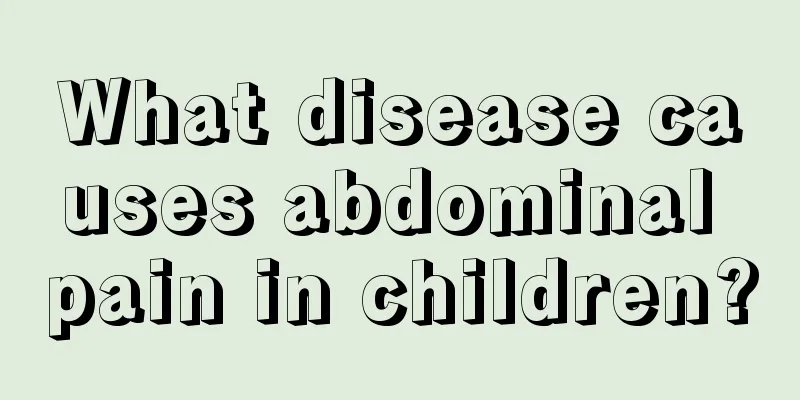What should I do if my child has a fever of 41 degrees?

|
Since children have relatively poor disease resistance, it is inevitable for them to have fever symptoms. Generally speaking, a fever over 39 degrees is considered a high fever, and if it exceeds 41 degrees, it is considered a very high fever. However, if a child's fever is too high, it will burn the child's brain and may affect the child's intelligence. Therefore, once parents find that their children have symptoms of fever, they must reduce the child's temperature in time. So, what should you do if your child has a fever of 41 degrees? Patients with high fever should be cooled down promptly and appropriately to prevent convulsions and other adverse consequences. For patients with a history of high fever convulsions or irritability, sedatives should be given while cooling down. For patients with fever awaiting diagnosis, the cause should be identified as much as possible, and no special treatment may be given for the time being, otherwise the fever pattern will change, the clinical signs will be blurred, and the diagnosis will be delayed. Cooling measures 1. Physical cooling Place the child in a quiet, cool, well-ventilated place. Use a cold towel or cold water bag to apply to the forehead, armpits, groin and other parts, or use an ice bag wrapped in cloth as a pillow on the head or place it on the above-mentioned parts. You can also use cold water (28-30℃) or alcohol (30-50%) to bathe the limbs, both sides of the torso and the back. If the child develops pale skin or cold skin during sponge bathing, stop immediately. Cold saline (30-32°C) enema can also be used, which is more suitable for those suspected of poisoning with mycobacterium oxysporum. It can not only reduce the temperature but also facilitate the collection of stool samples for examination. 2. The commonly used acupoints for acupuncture cooling are Quchi, Hegu, Dazhui, Shaoshang, Shixuan, etc. 3. Medication to reduce fever Antipyretics are generally not used to reduce the temperature of immature infants, young babies and weak children. Commonly used antipyretics include APC 5-10 mg/kg/time, or Arusan 1-2 tablets each time for infants aged 1-2 years (each tablet contains 0.06 grams of aspirin and 0.015 grams of luminal). You can also use pediatric antipyretic suppositories (paracetamol suppositories), for children aged 1 to 6 years, 1 tablet/time, 1-2 times a day, and insert the suppository into the anus. If you find that your child has a fever, you should take measures to reduce the fever in time. If the body temperature is below 38.5 degrees, physical cooling can be used. If it exceeds this temperature, especially when the child has a very high fever, antipyretics should be taken under the guidance of a doctor in time, and physical cooling should be used at the same time. This two-pronged approach can make the fever go down faster. |
<<: What should I do if my child is constipated and can’t defecate?
>>: What are the symptoms of separation anxiety disorder?
Recommend
What happens if children eat too many almonds?
Almonds are very nutritious nuts, rich in fatty a...
What to do if your child keeps coughing
If a child keeps coughing, it will be very bad fo...
Six-year-old child has a hole in his big tooth
If a six-year-old child has holes on his molars, ...
What are the key points for preventing accidental injuries among children of different ages?
Of course, everyone hopes that their children can...
What’s wrong with my one-year-old baby always picking his nose?
Speaking of picking the nose, this habit is natur...
Can hemiplegia in children be cured?
Hemiplegia is a common disease among children. It...
What disease does it cause when a breastfed baby has mucus in his stool?
In life, most babies grow up eating breast milk, ...
What causes a baby's heart murmur?
Every newborn baby is an extremely precious treas...
Can babies drink cantaloupe juice?
Babies need a variety of nutrients during their p...
How to cultivate children's language expression ability
When children are in their early childhood, paren...
What to do if your child's fingers peel
Parents will be very worried about all kinds of s...
What are the symptoms of cerebral palsy in premature babies?
Premature babies are prone to illness, so they us...
What are the dangers of spanking children?
Many adults like to use violence to solve problem...
What food should children eat if they have dry stools?
When children have dry stools, parents should pay...
Introduction to treatment methods for ADHD
ADHD is a disease that often occurs in children d...









